山本 自爐/Yamamoto Jiro
山本自爐(本名・次郎、1898~1954)は、新潟県出身の鋳金作家です。
山本が生まれたのは村上市長井町の、代々金工を生業としてきた名家です。山本は兄の貞次や弟の光路とともにやはり鋳金の道へと進み、鋳物師である父又五郎に師事して技術を身につけました。上京後は、1920年代中頃から帝展、新文展、日展へと意欲的に出品を重ねていきます。第10回帝展の図録には、彼が出品した【鋳胴水瓶】の、すっと縦に伸びる上品な造形が記録に残されています。1927年以降は、商工省主催工芸展で発表した作品が次々と注目を集め、作家としての存在感を強めていきました。たとえば、1933年の読売新聞に掲載された渡辺素舟(1890~1986)の美術評「帝展の工芸美術評 若きゼネレーション来る」では、「山本自爐氏の花器は上代の風趣を想はせてよく」というように、作品に漂う古き良き時代の趣きを評価されています。作家の団体活動にも多数加入し、工芸の研究団体としてあらゆる分野の若手作家たちで設立された「七日会」や、新潟県出身の帝展系の工芸家たちが集った「越佐工芸美術会(のちの新潟工芸美術会)」などへの参加を通して、同時代の仲間たちと切磋琢磨しながら自身の芸術を深めていきました。1945年に疎開してからは、瀬波町(現・村上市)に拠点を移して創作活動に励みますが、1954年、折しもサンフランシスコ日本工芸展への出品作品の制作中に、50代半ばという若さでこの世を去りました。
伝統を踏まえつつ、モダニズムの感覚を積極的に取り入れた山本の作品には、素朴な味わいと洗練された美しさが両立しています。また、ブロンズ製でありながら、重くなりすぎない柔らかなイメージを持っているのも特徴です。動物をかたどった造形も得意としており、新潟県立近代美術館に所蔵されている【鋳銅鷺香炉】(1940年)では、片足をあげた鷺の一瞬が愛らしく表現されています。
Jiro Yamamoto (1898-1954) was a metalworking artist from Niigata Prefecture.
Yamamoto was born into a distinguished family in Nagai-cho, Murakami City, where metalworking had been a family tradition for generations. Along with his older brother Sadaji and younger brother Koji, Yamamoto also pursued the path of metalworking, learning his craft from his father, Matagoro, who was a metalworker. After moving to Tokyo, he eagerly participated in exhibitions such as the Imperial Exhibition (Teiten), the New Ministry of Education Exhibition (Shinbunten), which were predecessors of the Japan Fine Arts Exhibition (Nitten), starting from the mid-1920s onwards. The catalogue of the 10th Teiten records the elegant, vertical form of the ” cast metal water bottle” that he exhibited. From 1927 onwards, his works presented at exhibitions organized by the Ministry of Commerce and Industry attracted attention, strengthening his presence as an artist. For example, in an art review by Soshu Watanabe (1890-1986) published in the Yomiuri Shimbun in 1933 titled “Craft Art Review at the Teiten: The Arrival of the Young Generation”, Yamamoto Jiro’s flower vases were praised for evoking the charm of ancient times. He also joined numerous artist groups and associations, such as the “Nanoka-kai”, founded by young artists from various fields, and the “Essa Craft Art Association (later renamed Niigata Craft Art Association)”, which brought together craft artists from Niigata Prefecture who were associated with the Teiten. Through participation in these groups, he deepened his artistic skills while exchanging ideas with his contemporaries. After evacuating in 1945, he relocated to Senami-machi (now Murakami City) and devoted himself to creative activities. However, in 1954, while working on pieces for the San Francisco Japanese Craft Exhibition, he passed away at the relatively young age of his mid-50s.
Yamamoto’s works, which incorporate the sense of modernism while respecting tradition, combine rustic charm with refined beauty. Another characteristic is the soft image, despite being made of bronze, without becoming excessively heavy. He was also skilled in sculpting animals, as demonstrated in the “Casting Copper Heron Incense Burner” (1940) held in the Niigata Prefectural Museum of Modern Art, where the moment of a heron raising one leg is charmingly depicted.
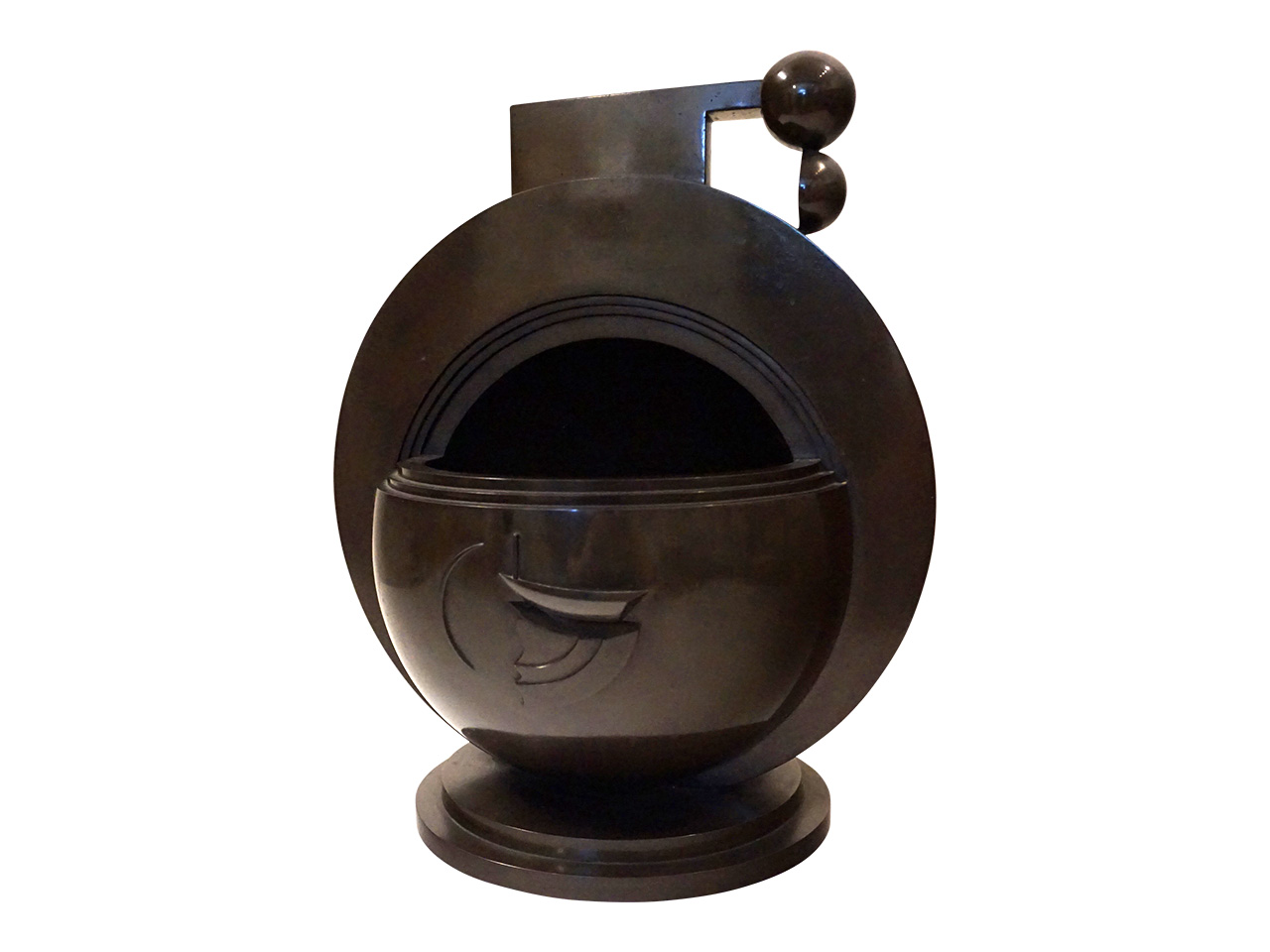

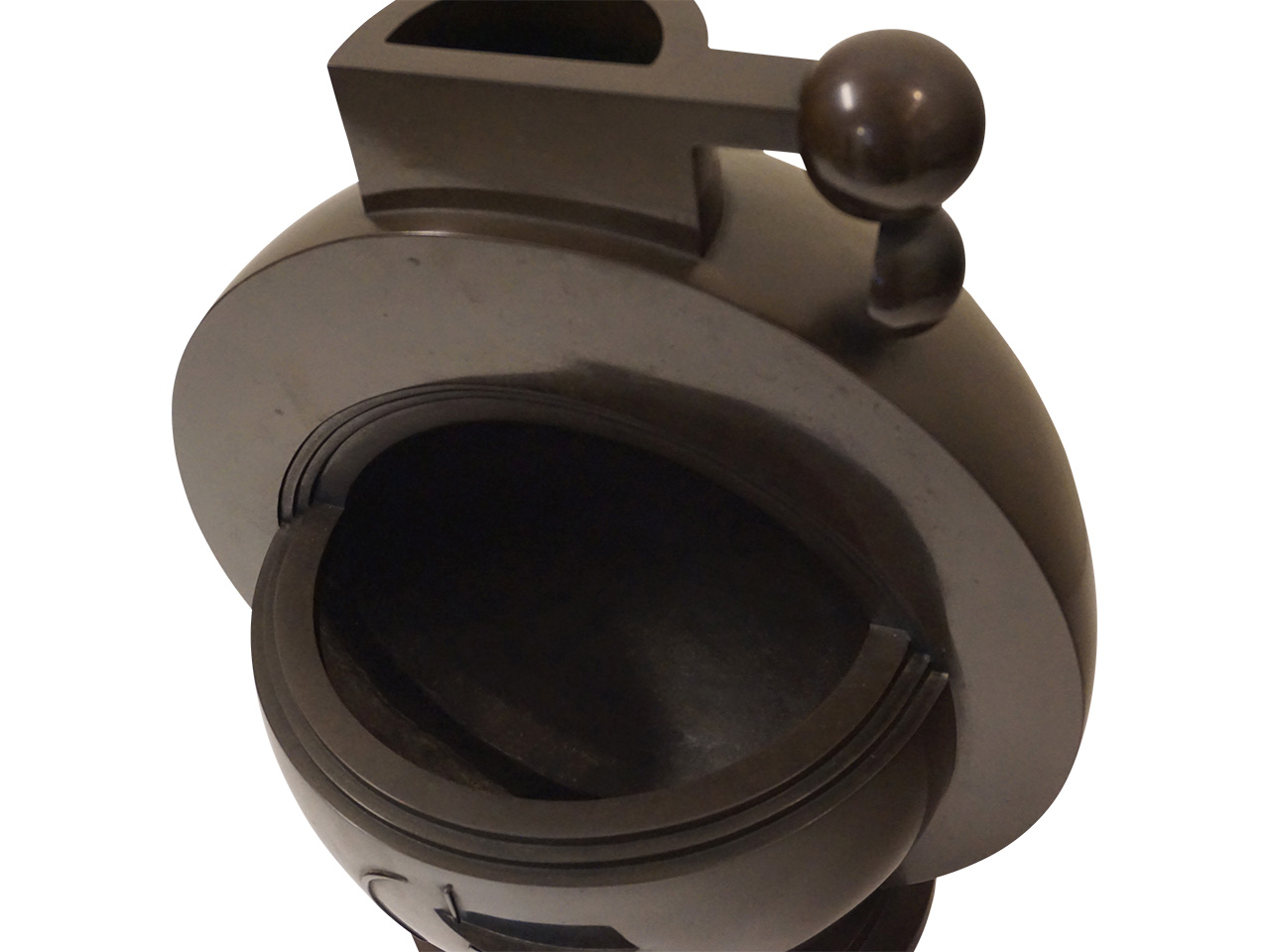
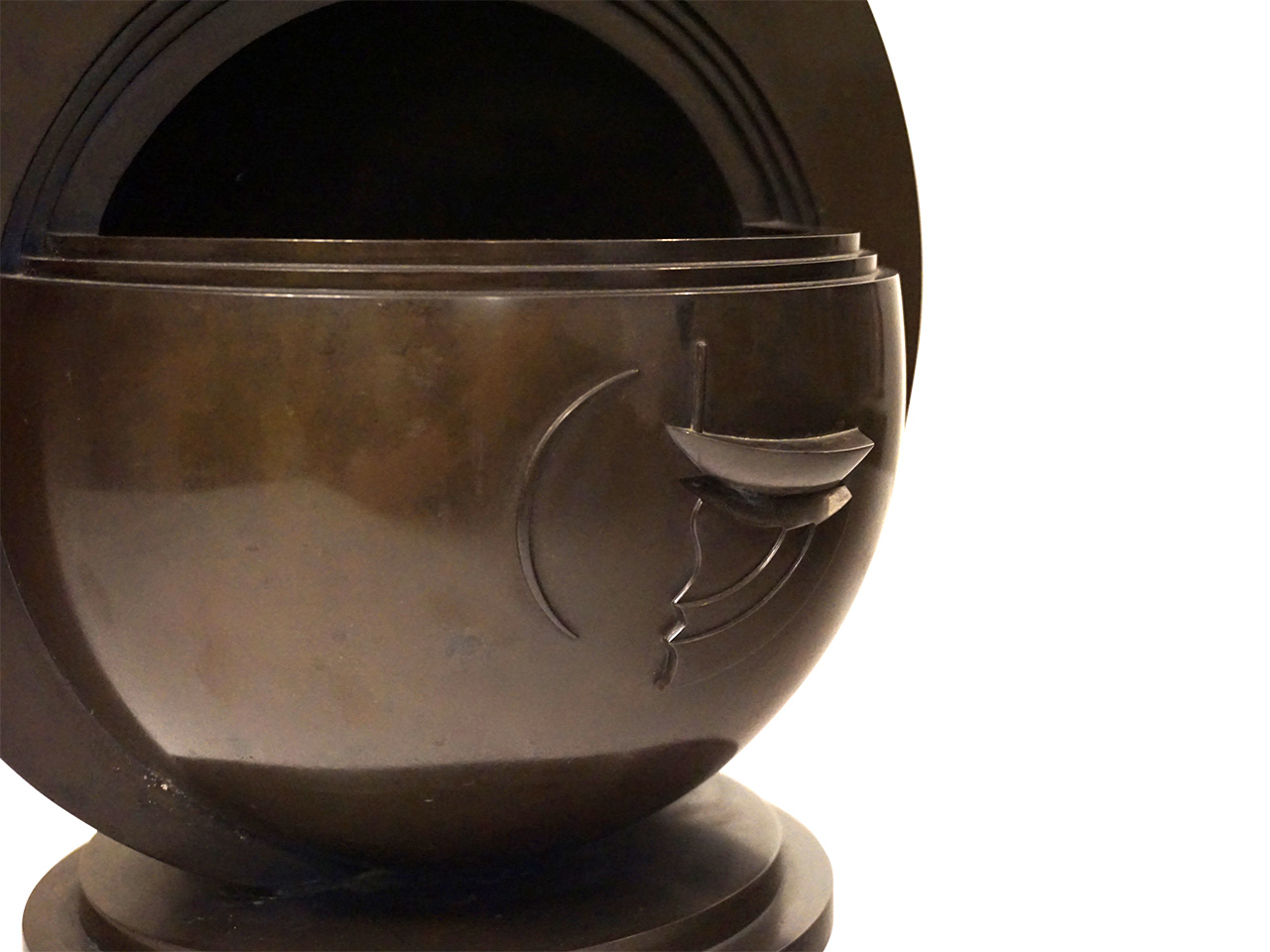
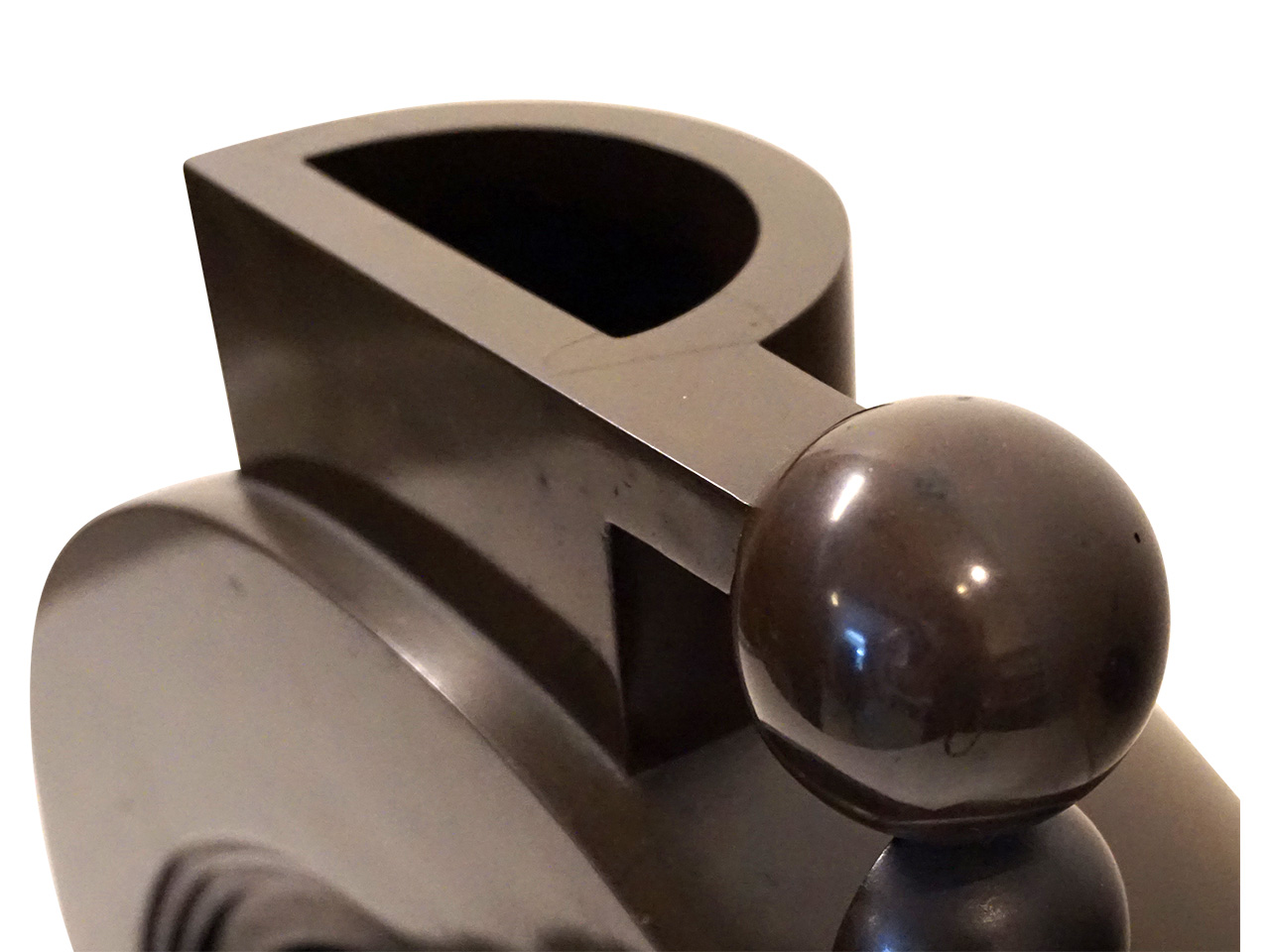
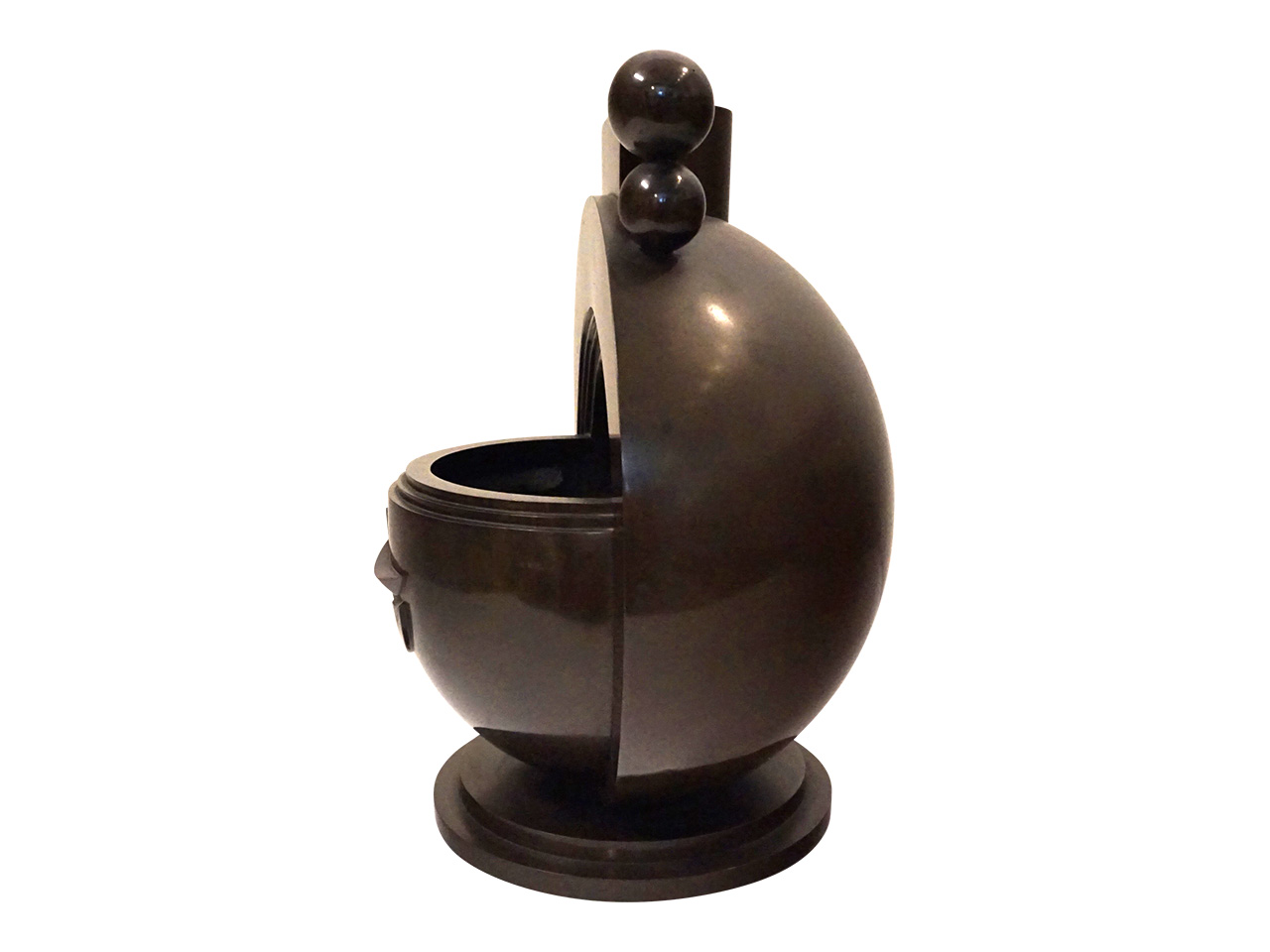
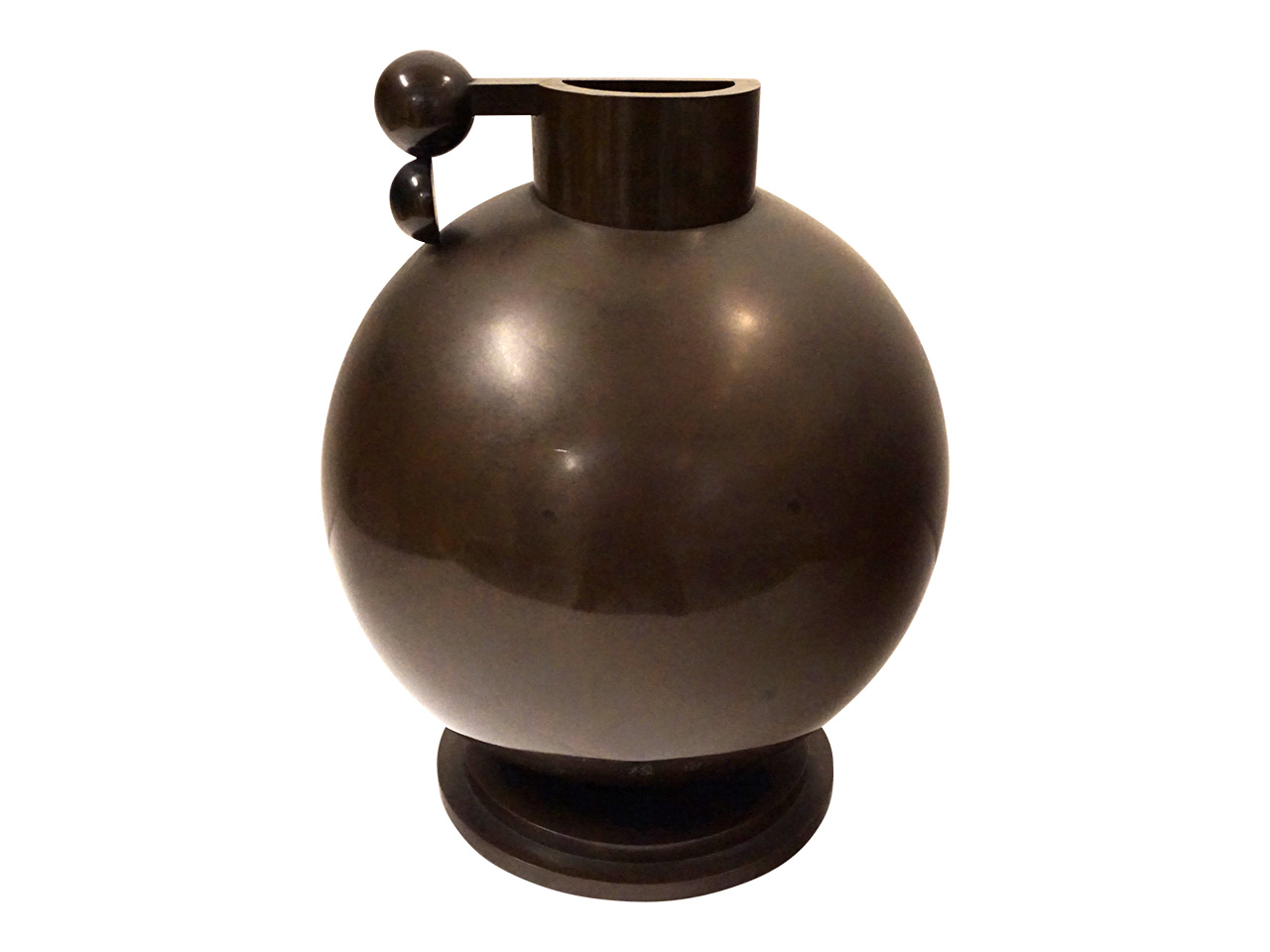
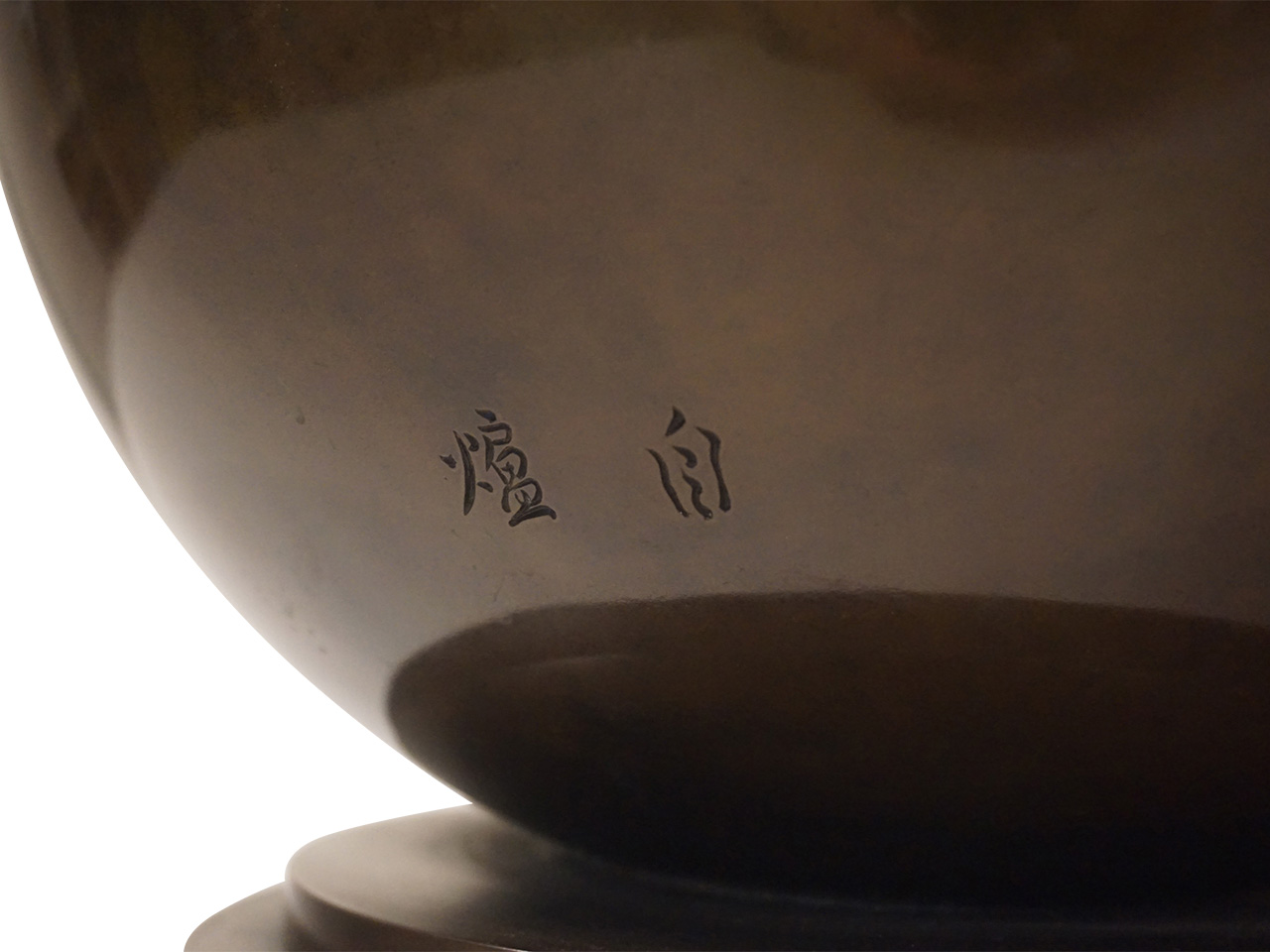
作品名:Bronze Teaburi
サイズ:H42cm×W35cm
価格:ASK
価格は税抜き表示です

